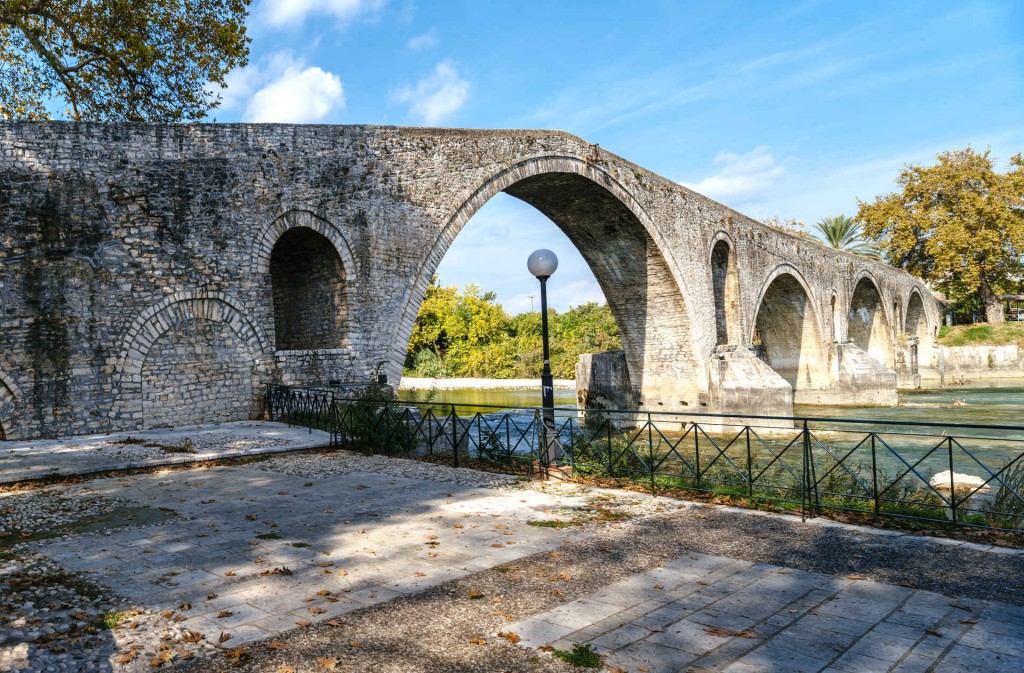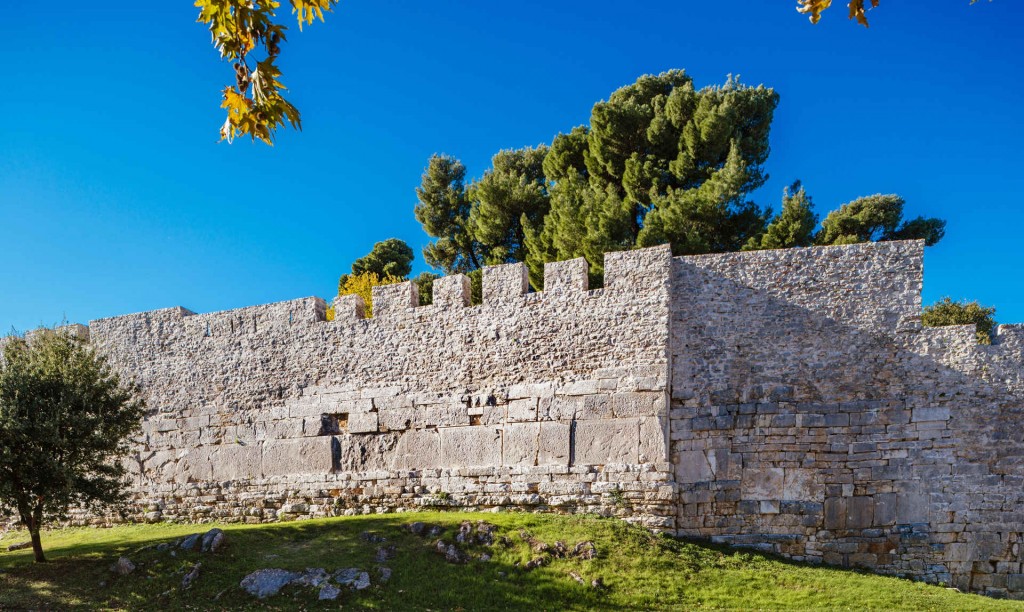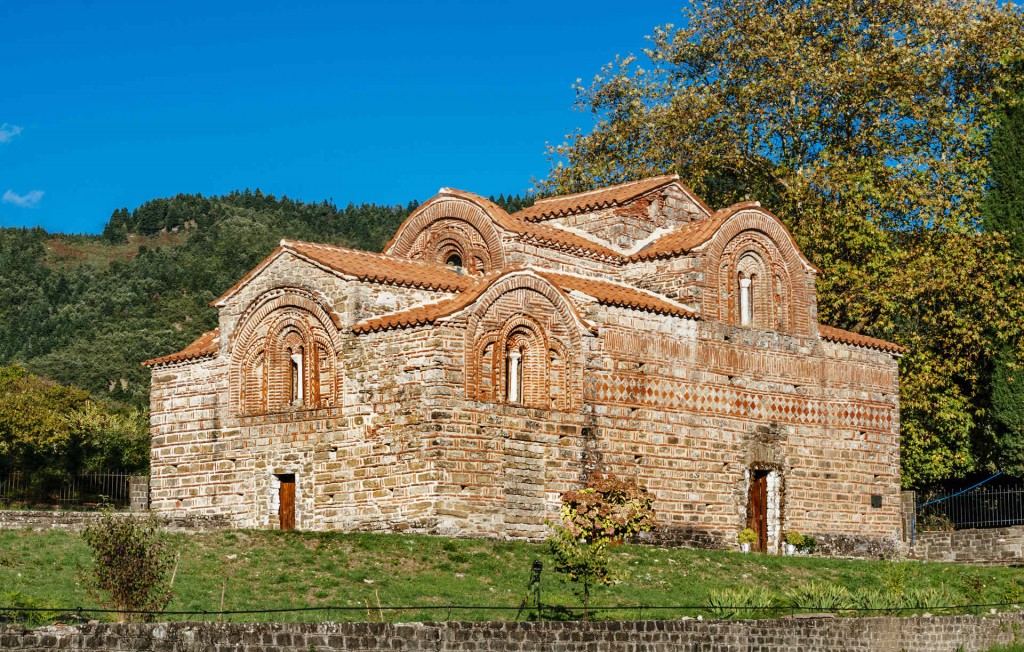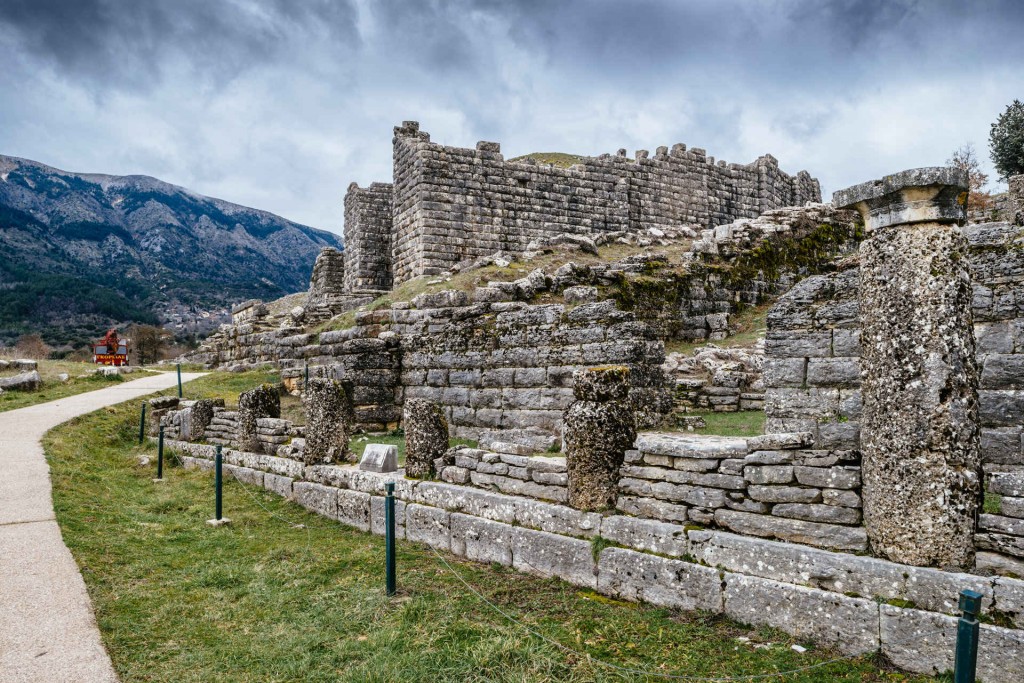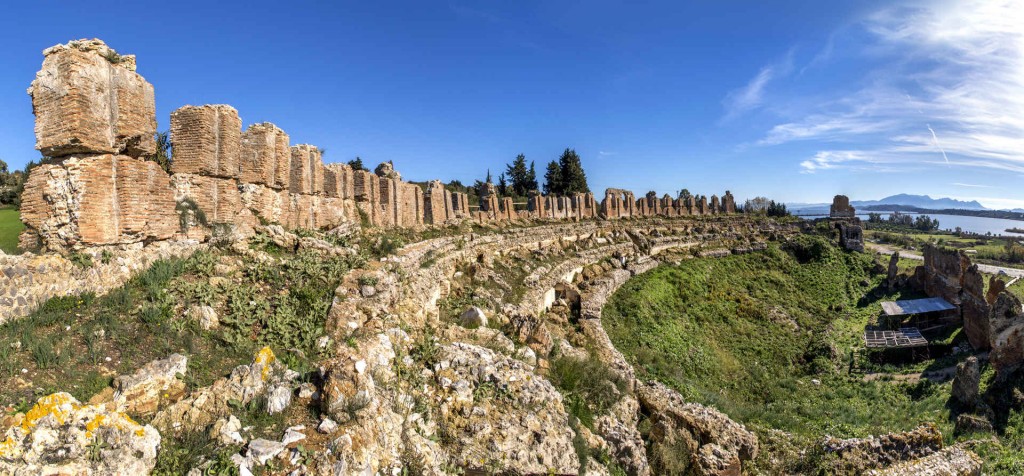It is one of the most famous bridges of Epirus. It consists of four large semicircular arches supported by large abutments over which dominate the vaults. Its width is 3.75 m and its length 145 m.
According to the tradition, the bridge was built in the early 17th century by the Artan Giannis Thiakogiannis.
The Turkish traveler Evliya Tzelempi mentions that the bridge was built by Faik Pasha during the 15th century.
The variations observed in the masonry comprise evidence that the bridge was not originally built in the 17th century, but was repaired several times during the Turkish occupation.
The abutments of the bridge most probably date back to the classical or Hellenistic times.
The roughness of the river, the soft soil and the particular requirements of the construction should have posed many difficulties in the foundation of the bridge, and the repairs that followed.
These difficulties, combined with the fear of the people for the elements of nature, created the famous legend of the mason’s wife who had to be sacrificed for the bridge to be strengthened.






